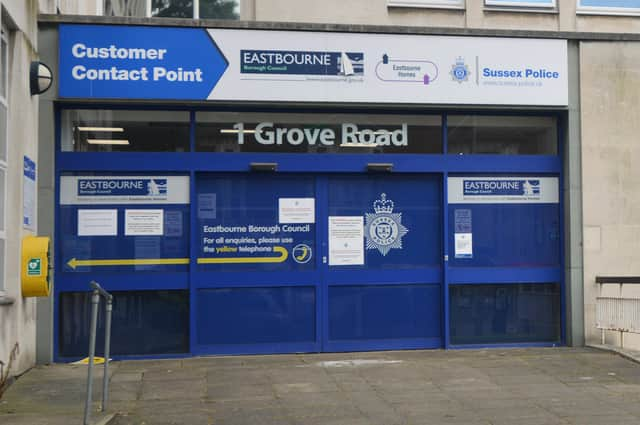Here’s how Eastbourne Borough Council is progressing on journey to net zero


On Wednesday (November 3), Eastbourne Borough Council cabinet members considered an annual report on the council’s progress on reaching net zero.
According to the report, the council has cut its carbon emissions from the direct use of fossil fuels and indirect consumption of electricity by 15 per cent against a 2018/19 baseline.
Advertisement
Hide AdAdvertisement
Hide AdHowever, this figures comes with several significant caveats, including the fact the council’s data does not include the direct emissions from the Congress Theatre or the Sovereign Leisure Centre.
This reduction also does not take into account indirect emissions produced by the council’s supply chain. Known as scope 3 emissions, these would include carbon produced by council contractors. This is thought to be the council’s greatest source of emissions.
The report also acknowledges that at least part of the reduction could be attributed to the impact of the coronavirus pandemic. For example, the reduced use of council buildings leading to a fall in emissions.
Even so, the progress was welcomed by Liberal Democrat cabinet member for climate change Jonathan Dow, who argued the changes being put in place by the council were reducing carbon emissions.
Advertisement
Hide AdAdvertisement
Hide AdIn a statement released after the meeting, Cllr Dow said: “The downward trend is undoubtedly good news, but of greatest longer term importance are the changes we’re implementing that will deliver the permanent reductions in carbon emissions needed.
“Not least of these is our move to a zero carbon electricity tariff that, alongside reduced consumption, will result in zero emissions from 2022.
“Significantly, what the analysis has also shown us, is that while there was less use of buildings during the pandemic, fuel and power consumption continued and that the decarbonising of heat and the improvement of building management is fundamental to meeting our carbon reduction targets.
“Let’s not forget that buildings generate nearly 40 per cent of global carbon emissions.”
Advertisement
Hide AdAdvertisement
Hide AdHe added: “Eastbourne Borough Council is doing all it can to ensure we hit our target of being carbon neutral by 2030.”
However, the report saw some criticisms raised by Conservative group leader Robert Smart, who argued the council’s 2030 target was likely to be ‘unachieveable’.
He said: “I think we should be honest with our residents. Most contributions in terms of reducing CO2 emissions are out of our hands and the national expectation is 68 per cent by 2030. So let’s be realistic but ambitious within that realism.”
He added: “All actions to reduce CO2 emissions have an economic cost, which must be evaluated as part of the process.
Advertisement
Hide AdAdvertisement
Hide Ad“I think that is a big omission from this paper. Perhaps someone around this table knows the answer to that question, because it should have been asked and it should be reported on.
“The report refers to 68 actions across seven action areas. It would be useful to estimate for each one both the potential carbon dioxide emissions and the economic cost if any.
“My suspicion is that many of these actions may not contribute much and even that total may demonstrate even a 68 per cent reduction by 2030 will a significant challenge.”
This argument saw some criticism from cabinet members, including Cllr Colin Swansborough.
Advertisement
Hide AdAdvertisement
Hide AdCllr Swansborough said: “What I find really disturbing, is when you talk to Conservatives, here and at county, nobody thinks anything is achievable. I think the Conservative government is actually expecting us to accelerate the way in which we are going to reach our targets.”
He added: “For goodness sake, I hope we’re not going to have the next eight or nine years of Conservatives coming here saying ‘told you you couldn’t do it, told you, you couldn’t do it’ because what we really need from the town is a positive outlook.
“When you go out into the town, you don’t have to look far to find people who are right behind it and right at the forefront of trying to achieve this target. So please don’t naysay it now.”